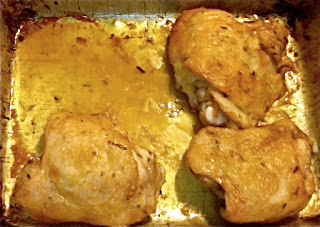 I have not made anything remotely resembling a scone in a long time, but was inspired by Nom Nom Paleo's recipe for these scones this week (see the link for her lovely photos). Also I have next week off, so why not celebrate with Sunday morning scones!? I made them this morning and they were very tasty, and a bit unlike any other grain-free bread product I have made. Perhaps this was due to the chocolate involved, but they were a bit more dessert-like. Not overly sweet, but chocolatey, with a nice texture.
I have not made anything remotely resembling a scone in a long time, but was inspired by Nom Nom Paleo's recipe for these scones this week (see the link for her lovely photos). Also I have next week off, so why not celebrate with Sunday morning scones!? I made them this morning and they were very tasty, and a bit unlike any other grain-free bread product I have made. Perhaps this was due to the chocolate involved, but they were a bit more dessert-like. Not overly sweet, but chocolatey, with a nice texture. |
| Scones and Tea! Next time I will shape the scone more... |
3 cups blanched almond flour
1½ teaspoons baking soda
½ teaspoon fine sea salt
4 tablespoons butter, as cold as possible (preferably frozen)
2 large pastured eggs
2 tablespoons apple cider vinegar
2 tablespoons honey
1 teaspoon vanilla extract
3 ounces of 80+% cacao dark chocolate, cut into bite-size chunks
⅓ cup dried cherries
1. Preheat oven to 350. Get out a baking sheet and piece of parchment paper (to be ready when things are sticky!)
2. Mix almond flour, baking soda, and salt in a large bowl. Grate chilled butter into the flour mixture with a cheese grater, and then cut the butter pieces in with a pastry cutter (or fork). You want the mixture to end up crumbly.
3. Whisk eggs, vinegar, honey, and vanilla in a small bowl. (If you need to heat your honey up to get it liquid, do that, and then put the whole mix in the fridge for 5-10 minutes to cool it down again.)
4. Make a well in the dry ingredients and pour in the liquids. Use a spatula to mix everything together to get a wet, chunky dough. Add the cherries and chocolate chunks and stir to blend.
5. My dough was very sticky here, so I put it in the fridge for 20 minutes. The Nom Nom Paleo photos do not appear to have sticky dough, so I am not sure if it was due to my warm honey or what. In any case, form the dough into two balls (I wet my hands a bit to help with the stickiness) and move to parchment. Press the tops of the balls down to form flattened circles, about 3/4" thick. Cut each circle into 4 wedges and arrange on the parchment (which is on the baking sheet). My dough was so sticky I just left it in the circular shape and separated the wedges midway through baking. It's not as aesthetic, but still delicious.
6. Bake for 20-25 minutes, turning tray halfway through. They will get brown - check for doneness with a toothpick. Eat!







































